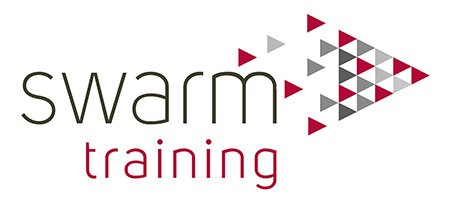
Business Improvement Specialist Apprenticeship
Level: 5 / Duration: 15-18 mths
Business Improvement Specialists typically report to Business Improvement Leaders who develop the improvement strategy and governance processes, and who provide technical guidance on advanced analysis. Business Improvement Specialists manage (directly and/or matrix) Business Improvement Practitioners who lead smaller improvement projects aligned to the improvement strategy. A typical ratio of Business Improvement Specialists to Business Improvement Practitioners in an organisation could be 1:10.
In comparison with the work of a Business Improvement Practitioner, Business Improvement Specialists draw on their advanced knowledge and skills in applying Improvement principles and tools across a range of programmes/projects/areas to build the capability of others. They also swiftly visualise processes, problems and opportunities and use both graphical and statistical analysis to deliver improvements.
Assessment
| A portfolio of evidence of their best work. Please note: The portfolio of evidence must also include evidence relating to the preparation and delivery of a training session with Level 4 learning outcomes linked to one or two improvement topics.
|
| 4 hour examination, based on 8 mini case studies The exam will cover topics where there is a series of right/wrong answers. It must require the apprentice to work with sets of data in Excel, Minitab or an alternative software package, apply tools and draw conclusions. Subjects covered in the exam will be Sampling, Measurement System Analysis, Capability Analysis, Transformation, Hypothesis Testing, Correlation/Regression, Statistical Process Control, and one other. |
| A Professional Discussion with an external End Point Assessor underpinned by their portfolio of evidence Please note: a technical expert from the apprentice’s employer must be present in the EPA |
Knowledge, Skills and Behaviours
We can provide you with a full list of the Knowledge, Skills and Behaviours which your apprentice will be taught and assessed on but as an overview, your apprentice will learn the following:
-
Business and economic risks
Government regulation or trading conditions
-
Personality types
Team development stages
Motivational techniques
Situational leadership
Learning styles and coaching & mentoring models
Maslow’s hierarchy of needs
-
Multi-element business case
Financial plan
Benefits realisation plan
Risk management plan
Project plan
Change management methods
Impact/readiness
Influencing strategies
-
Practical Problem Solving
Define-Measure-Analyse-Improve-Control
8-Disciplines of Decision Making
Identify-Define-Optimise-Verify
Policy deployment principles
Lean culture, principles of Lean Thinking and Lean tools including origins and cultural aspects critical to successful application within an organisation.
Identification & prioritisation
Creativity tools e.g. theory of inventive problem solving (TRIZ), Pugh matrix
-
Voice of the customer and techniques for reliable data collection
Quality Function Deployment principles
How to build a House of Quality
Process mapping & analysis
Activity network diagrams
Design structure matrix
Process modelling
Key function diagrams and analysis
Statistics & measures: Probability distributions, Confidence intervals, Central limit theorem
Test data for stability and normality and strategies for dealing with non-stable or non-normal data
Measurement system analysis
Repeatability & Reproducibility analysis
Process capability: Data transformation, life data analysis and prediction
Root cause analysis: Matrix plots, multi-vari charts, hypothesis testing principles and methods, correlation and regression principles and methods
Experimentation: Principles of full and fractitional designed experiments including replicates, repeats, randomisation, blocking and centre points, resolution and confounding
Planning and analysis using residuals, main effects & interaction plots, hierarchy of terms, Response Surface Method, Split plots, Analysis of variance (ANOVA), approaches for model optimisation
-
Benchmarking
Failure mode avoidance: System state flow, boundary diagram, interface analysis tables, fault tree analysis, robustness checklist, tolerance design and analysis
Principles and links between Failure Modes and Effects analysis for concepts, designs, processes.
Sustainability & control: Control and reaction plans. Prevention controls
-
Drive for results
Team-working
Professionalism
Process Thinking
Continuous development
Safe working
OR
complete the form below
